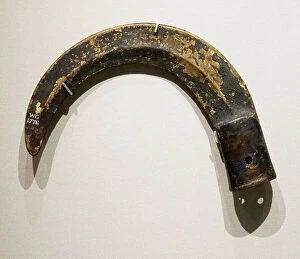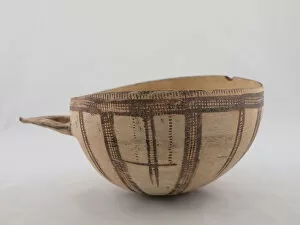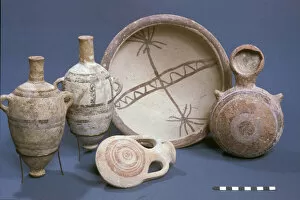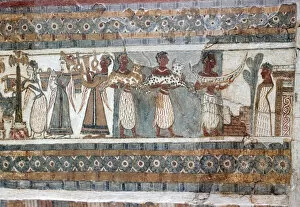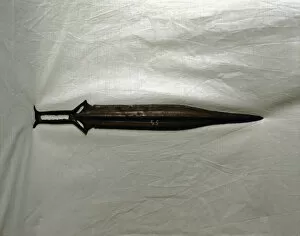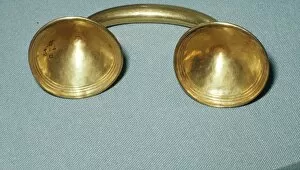Late Bronze Age Collection
The Late Bronze Age, spanning from about 1450-1200 BCE, was a time of artistic and cultural flourishing
For sale as Licensed Images
Choose your image, Select your licence and Download the media
The Late Bronze Age, spanning from about 1450-1200 BCE, was a time of artistic and cultural flourishing. This period witnessed the creation of remarkable artifacts that provide us with glimpses into the past. One such artifact is a beautifully decorated bowl from this era. Crafted by an unknown creator, it showcases intricate designs that reflect the artistic sensibilities of the time. The bowl serves as a testament to the skill and craftsmanship possessed by ancient artisans. Another noteworthy piece is a piece of Canaanite pottery discovered in Gezer, Israel. Dating back to 1500-1200 BC, this pottery features exquisite decorations that depict scenes from everyday life during that period. It offers valuable insights into the customs and traditions prevalent at the time. A fascinating fresco on a sarcophagus found in Hagia Triada captivates viewers with its detailed portrayal of ancient life. The fresco captures moments frozen in time, allowing us to glimpse into religious rituals or social gatherings that were significant during those times. Gold also played an important role during this era, as seen in a dish depicting a hunting scene from Ras Shamra (Ugarit). This golden masterpiece showcases not only artistic excellence but also hints at societal values and interests related to hunting and nature. Religious beliefs are reflected in another fresco on a sarcophagus from Hagia Triada which depicts Baal, the storm-god holding his thunderbolt—an intriguing representation of divine power worshipped during Late Bronze Age Ugarit (Ras Shamra). Weapons were also crafted with great precision during this period; one example being a sword with three parts barb and carps tongue-shaped blade found in Palma del Rio (Cordoba). Such weapons would have been used for both defense and offense—a reminder of how warfare shaped societies even then. Moving away from weaponry, we encounter an exquisite gold dress-fastener dating back to c1400BC-600 BC, discovered in Ireland.

